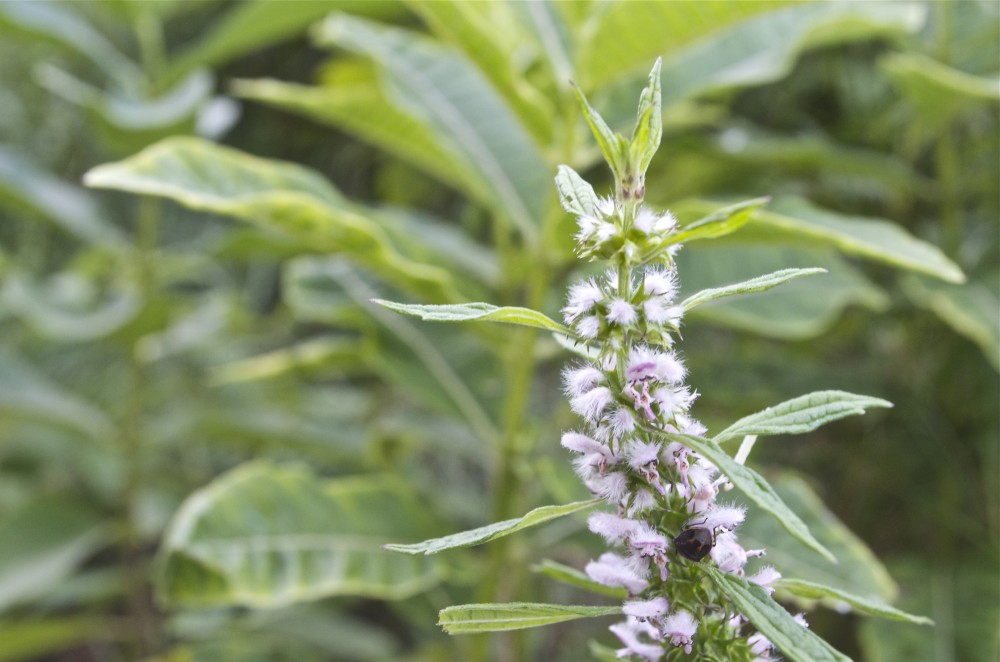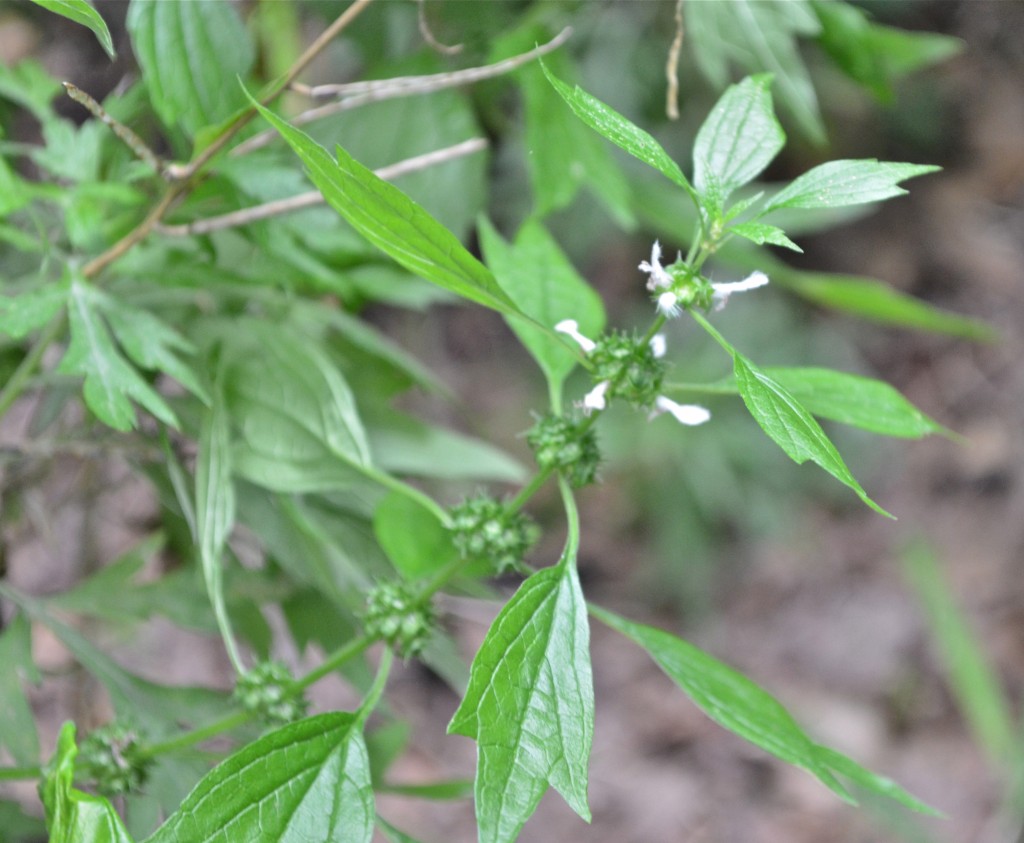A modest little aster by the trail. Not too many new blossoms back in the woods…
Long-stalked Aster (Symphyotrichum dumosum)


 One blooming at Charles River Peninsula, and one just getting started at Wilson. Furry little things. Was used by midwives to prevent uterine infection and for other pregnancy-related issues; that’s how it came to be called Motherwort. Mint family. Originally from Central Asia but widely distributed due to its medicinal uses.
One blooming at Charles River Peninsula, and one just getting started at Wilson. Furry little things. Was used by midwives to prevent uterine infection and for other pregnancy-related issues; that’s how it came to be called Motherwort. Mint family. Originally from Central Asia but widely distributed due to its medicinal uses.
Motherwort, Lion’s Ear, Lion’s Tail (Leonurus cardiaca)
Spikes of yellow flowers and toothed divided leaves with 5 leaflets. This is one of those herbs with a long recorded history of medicinal use, from ancient Greece through the Middle Ages in Europe, and was prescribed for ailments on this continent into the 19th century. A bit of folklore: if you hold it over someone’s head, it will induce a deep sleep until you take it away… Rose family. Native.
Agrimony (Agrimonia)
Bonus photos for A.F. Marilyn, who likes a little context with her wildflowers. This park has 6 meadows with bits of woods separating them (for the most part), and they all serve up different flora. Here is one of them:
Toward the end of the hike, there’s a little creek. It’s running low because it’s such a dry hot summer (about 95 during this walk), but here is Lucy getting all the satisfaction she can from an inch of water:
Back to Centennial when the temperature was about 95. I don’t have a closeup of this plant because it’s out in the poison ivy field, but it’s about 8 feet tall, and even from a distance you can see the distinctive leaf structure. They’re wilted from the heat and drought I presume, but you can see that it’s several leaves encircling the central stalks (“whorled leaves”). The only giant plant I can find with that leaf is Joe Pye Weed, usually pink, but evidently there are white variations. Who was Joe Pye? It seems he was a colonial-era New England herbalist/doctor (Native American, in some versions) who famously used this weed to stop an epidemic of typhus. Native. Aster family.
White Joe Pye Weed (Eupatorium)